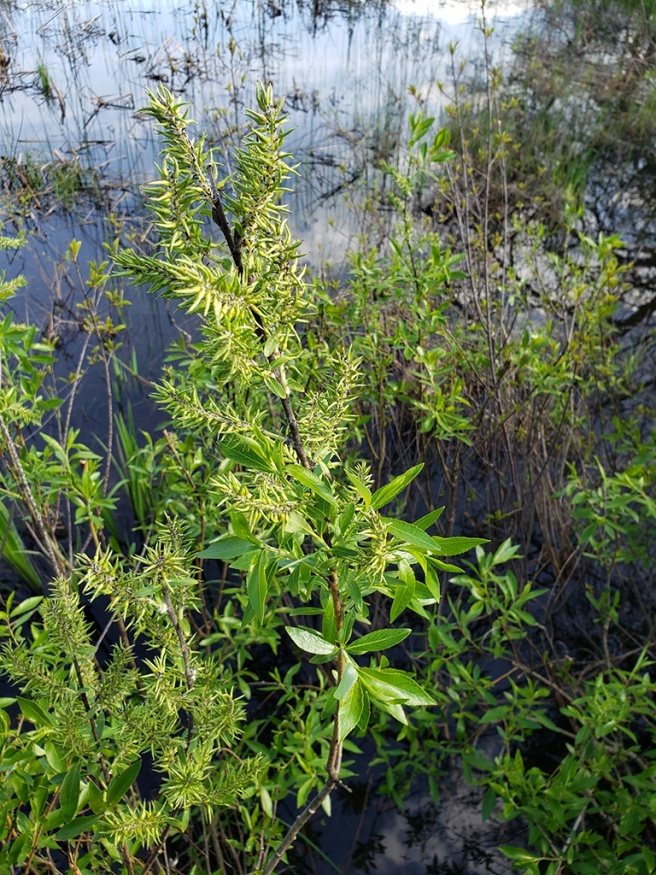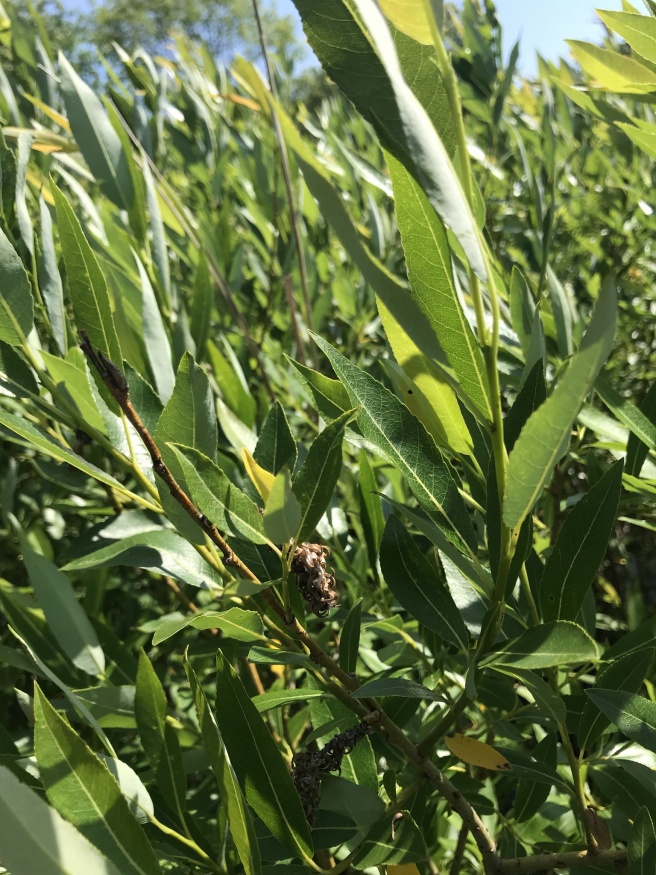Bayberry Willow

Other Names: blueleaf willow
Family: Salicaceae Native to: Eastern North America, Interior North America
Eco benefits: erosion control
Natural habitat: waters edge, dunes
Shapes: multi-stemmed, clump
Height: 7-16ft
Growth rate: fast
Common uses: naturalized plantings
Light: full sun
Transplanting: easy
Soil: moist and fertile, wet, sandy
Reproduction type: dioecious
Bayberry willow is a medium sized shrub native to Eastern North America. It occurs mainly in moist to wet dunes, shores, and sandy areas along the Great Lakes.

The leaves are lance-like, and somewhat sharply toothed. Catkins appear slightly before or with the leaves (April to June). Resembles Salix eriocephala (heart-leaved willow) except bayberry willow has thicker leaves and a more glaucous surface. Stipules at the leaf base is another identifying feature. Salix myricoides hybridizes on dunes with Salix cordata which can also pose a challenge for identification.
References
Department of Agriculture, Conservation and Forestry. (n.d.). Salix myricoides Muhl. Retrieved from https://www.maine.gov/dacf/mnap/features/salixmyr.htm
MICHIGAN FLORA ONLINE. A. A. Reznicek, E. G. Voss, & B. S. Walters. February 2011. University of Michigan. Web. October 20, 2020. https://www.michiganflora.net/species.aspx?id=2632
Natural Resources Conservation Service. (n.d.). Salix myricoides Muhl. Bayberry willow. Retrieved from https://plants.usda.gov/core/profile?symbol=SAMY2
Wisconsin State Herbarium. (n.d.). Salix myricoides muhl. Retrieved from http://wisflora.herbarium.wisc.edu/taxa/index.php?taxon=4953